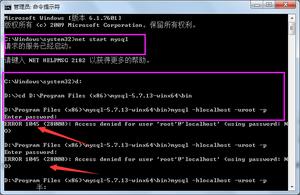Python中冒号等于(:=)是什么意思?
:=操作数是什么意思,更具体地说是Python?
有人可以解释如何阅读此代码段吗?
node := root, cost = 0frontier := priority queue containing node only
explored := empty set
回答:
回答:
在问题的上下文中,我们正在处理伪代码,但是从Python
3.8开始,:=它实际上是一个有效的运算符,它允许在表达式中分配变量:
# Handle a matched regexif (match := pattern.search(data)) is not None:
# Do something with match
# A loop that can't be trivially rewritten using 2-arg iter()
while chunk := file.read(8192):
process(chunk)
# Reuse a value that's expensive to compute
[y := f(x), y**2, y**3]
# Share a subexpression between a comprehension filter clause and its output
filtered_data = [y for x in data if (y := f(x)) is not None]
有关更多详细信息,请参见PEP 572。
回答:
您发现的是
是计算机程序或其他算法的工作原理的非正式高级描述。
:=实际上是赋值运算符。在Python中,这很简单=。
要将伪代码转换为Python,您需要了解所引用的数据结构,以及更多的算法实现。
有关伪代码的一些注意事项:
:=是赋值运算符或=在Python中=是等于运算符或==在Python中- 有某些款式,您的里程可能会有所不同:
帕斯卡风格
procedure fizzbuzzFor i := 1 to 100 do
set print_number to true;
If i is divisible by 3 then
print "Fizz";
set print_number to false;
If i is divisible by 5 then
print "Buzz";
set print_number to false;
If print_number, print i;
print a newline;
end
C风格
void function fizzbuzzFor (i = 1; i <= 100; i++) {
set print_number to true;
If i is divisible by 3
print "Fizz";
set print_number to false;
If i is divisible by 5
print "Buzz";
set print_number to false;
If print_number, print i;
print a newline;
}
注意花括号用法和赋值运算符的区别。
以上是 Python中冒号等于(:=)是什么意思? 的全部内容, 来源链接: utcz.com/qa/429241.html






